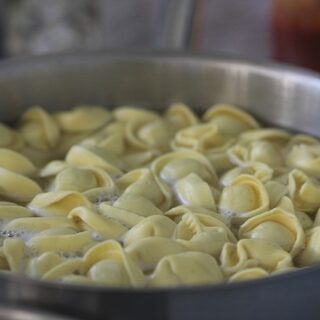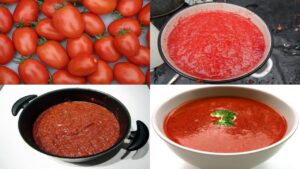Al dente is an Italian expression meaning “to the tooth.” It’s commonly used to describe pasta, since it is cooked so that it still has texture and is firm when bitten.
However, the term can also apply to other types of dishes, like vegetables and rice. With this guide, you can learn everything there is to know about al dente and become a culinary master in your own kitchen!
The Definition of Al Dente – A Must Learn for Home Chefs
 Learn what al dente means, how it applies to various types of food and gain culinary mastery with this guide!
Learn what al dente means, how it applies to various types of food and gain culinary mastery with this guide!
Don’t miss out on becoming a pro chef in the kitchen!
What Does Al Dente Mean?
Al dente is an Italian phrase meaning “to the tooth” or “firm to the bite”.
It’s used to describe dishes that have been cooked so that they are still firm and provide some resistance when bitten.
This way of cooking has become popular in many different cuisines all over the world, particularly with pasta dishes where the goal is to create an enjoyable texture without overcooking it.
For Pastas & Grains
Al dente pasta and grains should be cooked just until they are tender with a slight resistance when bitten.
Depending on the type of pasta and cooking method, this can vary from 8-15 minutes for classic white spaghetti to 50 minutes or more for whole wheat pasta.
To determine if your dish is al dente, use the “tooth test” – bite into it and check the texture.
It should have a slight resistance without being crunchy or hard.
For Vegetables
Vegetables should also be cooked al dente for maximum flavour and texture.
To achieve this, choose the cooking method that will preserve the texture without compromising food safety.
For example, blanching vegetables in boiling water rather than steaming them will retain the crispness while ensuring that they are properly cooked through.
For Rice and Grains
Rice and other grains like quinoa should also be cooked al dente to ensure the best texture and prevent sogginess or mushiness.
Cook them according to their instructions while keeping an eye on their doneness before taking them off the heat or out of the oven.
For Meats and Seafood
For grilled and roasted meats and seafood, al dente also means different cooking times.
For example, you’ll want to cook a steak until it is slightly firm when pressed with a finger as opposed to well-done which would be hard.
Similarly, fish should be cooked just until the center is opaque and not overly firm when pressed. This will ensure maximum flavor and texture for the perfect plate of food!
Testing for the Perfect Texture
Testing for when something is al dente can be tricky, but the most important thing to remember is that the texture should be slightly firm and not too soft.
This means that sauces should have slight resistance when stirred, pasta and rice should only require a few minutes of cooking time while still having some structure when bitten into, and grilled and roasted meats should be slightly firm yet easily cut into with a fork or knife.
How To Cook Al Dente Pasta
Ingredients
- 100 grams pasta noodles
- 1 litre 4 cups Water
- Salt
Instructions
- Fill a pot with 4 cups/1 litre of water per 100 grams serving of pasta, cover it, and set it to Boil over high heat.
- When the water comes to a boil, remove the cover and add 1 tablespoon of coarse sea salt (a little less if it's fine-grained) per litre of water.
In terms of saltiness, it should resemble sea water.
This will season your pasta — and it's the only chance in your cooking process to do so. - When the water comes back to a rolling boil, add the pasta and give it a good stir with a wooden spoon or tongs to separate the pieces.
- Stir the pasta occasionally as it cooks, this will keep the pieces from sticking to each other or to the pot.
- A minute before the estimated pasta cooking time is up, remove a piece of the pasta to check for doneness.
You want an al dente, or chewy "to the tooth" texture -- not soft, limp pasta.
Bite the pasta to check. - Test again every 30 seconds or so, and as soon as the broken piece is a uniform, translucent yellow, drain the pasta.
- Toss the pasta in your sauce and serve.
Video
Easy Recipes featuring Al Dente Noodles for Every Occasion
Enjoy delectable Italian-style dishes with Al Dente noodles and these easy recipes!
Why not create a medley of flavours for your next dinner party or just a special meal for yourself.











